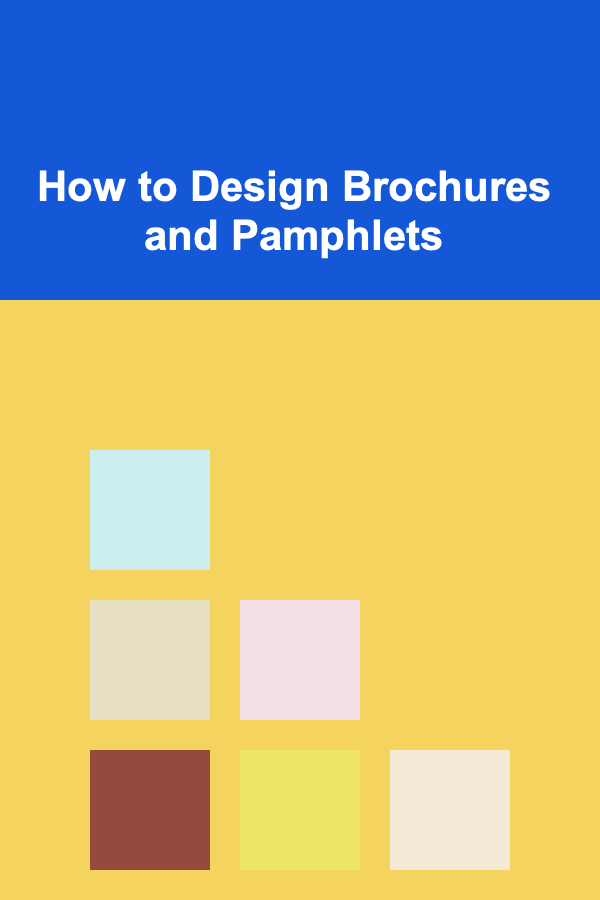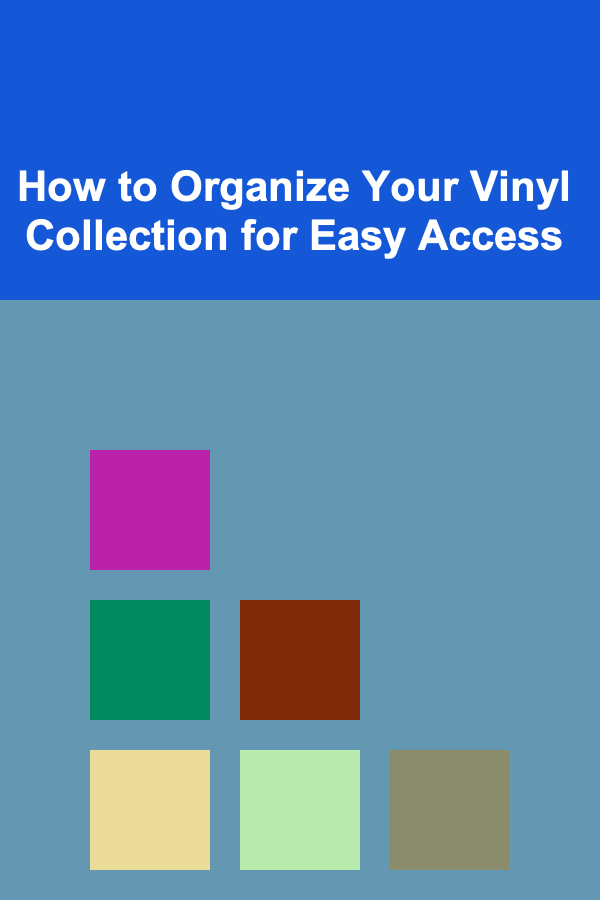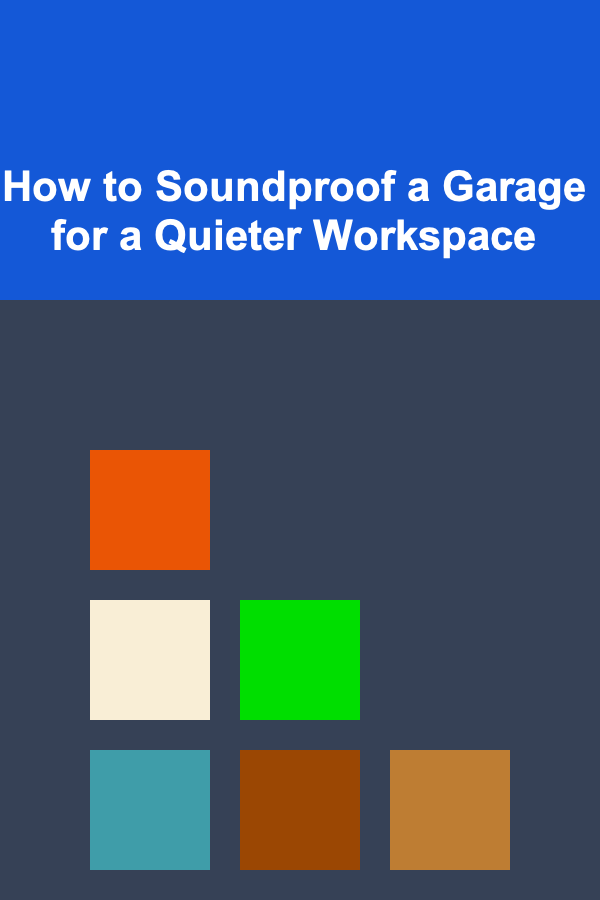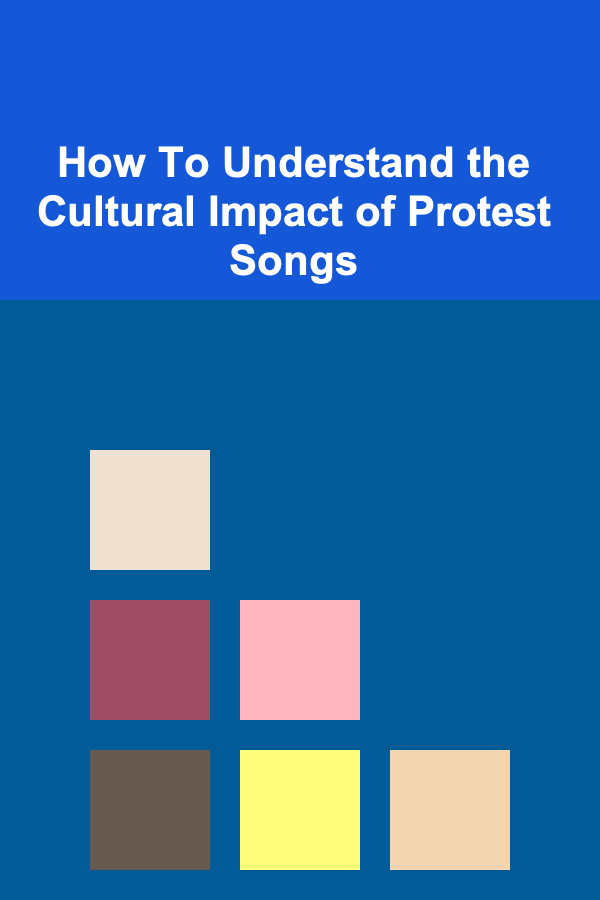
How to Design Brochures and Pamphlets
ebook include PDF & Audio bundle (Micro Guide)
$12.99$7.99
Limited Time Offer! Order within the next:

Brochures and pamphlets are essential marketing tools that convey key information about a product, service, or organization in a compact, visually appealing format. Whether you are designing for a nonprofit, a corporate business, or an event, brochures and pamphlets play a significant role in reaching audiences and capturing their attention. The design of these materials is crucial in communicating the intended message clearly and effectively.
Designing brochures and pamphlets requires a combination of creativity, strategy, and technical know-how. This article will guide you through the process of designing effective brochures and pamphlets, covering key elements, design principles, software tools, and practical tips to ensure your materials not only look good but also engage your audience.
Understanding the Purpose of Brochures and Pamphlets
Before diving into the design process, it is important to understand the purpose and distinction between brochures and pamphlets. Both of these materials serve as promotional or informational pieces, but they vary in format, function, and design elements.
Brochures
Brochures are usually more complex and are designed to provide in-depth information. They are typically folded into multiple panels (such as bi-folds, tri-folds, or z-folds) and are often used by businesses, organizations, and companies to provide details about products, services, or events. Brochures tend to include a mix of text, images, and graphical elements to communicate a message effectively.
Pamphlets
Pamphlets, on the other hand, are typically simpler and smaller in size, often consisting of a single sheet of paper folded in half or thirds. They are commonly used for quick, concise information. Pamphlets may have less visual complexity than brochures and are designed for quick consumption, usually providing an overview of the key points of a message.
Both brochures and pamphlets are designed to attract attention, inform, and persuade the reader. Whether you're designing for a business, event, cause, or organization, your design should reflect the message you want to communicate.
Key Elements of Brochure and Pamphlet Design
1. Clear and Concise Messaging
At the heart of any good brochure or pamphlet design is a clear and concise message. Your material should quickly communicate the value proposition or the purpose of the document. Whether you're promoting a product, service, or event, your message must be easy to understand at a glance.
The text should be short, to the point, and well-organized. Avoid jargon and complex sentences, and focus on what matters most. Use catchy headlines, bullet points, and short paragraphs to make the content digestible. Remember that in marketing materials, less is often more.
2. Compelling Visual Design
A brochure or pamphlet's visual design is critical to attracting attention and keeping the reader engaged. The layout, typography, color scheme, and imagery all contribute to the overall design aesthetic.
Layout
The layout defines how content is arranged on the page. A clean, well-structured layout allows the reader to easily navigate the content. You can opt for a simple grid layout or use asymmetrical designs depending on the tone of your brand or the message you're trying to convey.
For brochures, which are typically folded, consider how the panels interact. Make sure the most important information is placed prominently on the front panel (or the first thing the reader will see). For pamphlets, since they are typically a single sheet of paper, ensure that each fold conveys a clear section of content.
Typography
Typography plays a significant role in the readability of brochures and pamphlets. Choose fonts that are legible and appropriate for your brand's tone. For instance, modern sans-serif fonts like Arial or Helvetica work well for clean, professional designs, while more decorative fonts can add personality to a brochure for a creative business or event.
In addition to choosing the right fonts, consider the hierarchy of your text. Use different font sizes and weights to emphasize headings, subheadings, and body text. Contrast between bold and regular text will draw the reader's eye to important sections.
Color Scheme
Color is an important element that impacts the emotional appeal of your design. Different colors evoke different feelings and can help reinforce your brand identity. For example, blue is often associated with trust and professionalism, while red can convey energy and excitement.
Stick to a color palette that complements your brand colors and is visually harmonious. Too many colors can overwhelm the reader, so aim for simplicity with no more than three to five primary colors. Also, ensure there is good contrast between text and background for readability.
Imagery
Images are powerful in brochure and pamphlet design, as they can visually convey the message and make the material more engaging. Use high-quality images that are relevant to the content. For instance, if you're designing a brochure for a resort, beautiful images of the location or amenities will help convey the experience to potential visitors.
Make sure the images are well-lit, sharp, and properly placed within the layout. Avoid overcrowding the design with too many visuals; instead, choose images that complement the text and enhance the overall message.
3. Call to Action (CTA)
One of the most important aspects of brochure and pamphlet design is the inclusion of a clear call to action (CTA). The CTA is the part of the design that tells the reader what you want them to do next. It could be as simple as "Visit our website," "Call for a consultation," or "Register today."
Make the CTA stand out by using contrasting colors or larger text. Position it in a place where the reader will easily see it, typically at the end of the document or on the back panel of a brochure. The CTA should feel like a natural next step after reading through the content.
4. Branding
Your brochure or pamphlet is an extension of your brand identity. Incorporating brand elements such as your logo, tagline, and brand colors will help reinforce the identity of your company or organization. Consistency in branding across all marketing materials will build recognition and trust with your audience.
Design Principles for Brochures and Pamphlets
1. Balance and Alignment
Balance refers to the distribution of elements within the design, ensuring that the layout is not overly cluttered or too sparse. A well-balanced design allows the viewer to naturally flow through the content. Alignment helps create a sense of order and structure, making the design easier to read and navigate.
2. Contrast and Emphasis
Contrast is used to create visual interest and to highlight important elements. It can be achieved by using contrasting colors, sizes, and textures. By applying contrast, you can guide the reader's eyes to the most important parts of the brochure or pamphlet.
Emphasis can be placed on key messages or calls to action, ensuring they stand out and catch the reader's attention.
3. Consistency
Consistency in design is key to ensuring that all elements of the brochure or pamphlet work together harmoniously. Use a consistent color scheme, typography, and imagery style throughout the document. This helps create a cohesive look that strengthens your brand identity.
4. Whitespace
Whitespace, or negative space, is the area of the design that is left empty. It helps create breathing room for the design and makes it more visually appealing. Whitespace is important for improving readability and preventing the design from looking too crowded or overwhelming.
Software Tools for Designing Brochures and Pamphlets
Designing brochures and pamphlets has become more accessible thanks to a variety of software tools. Below are some of the most popular options available for both beginners and professional designers.
1. Adobe InDesign
Adobe InDesign is the industry standard for creating professional brochures and pamphlets. It offers advanced layout features, typography controls, and precise alignment tools, making it ideal for complex designs. It also allows for easy integration with other Adobe products like Photoshop and Illustrator.
2. Canva
For beginners or those looking for a quick solution, Canva offers an intuitive online platform for designing brochures and pamphlets. It provides ready-made templates, drag-and-drop features, and an extensive library of fonts, images, and illustrations. Canva is great for creating simple designs without requiring advanced technical skills.
3. Microsoft Publisher
Microsoft Publisher is a more accessible tool for creating brochures and pamphlets, especially for those who are already familiar with other Microsoft Office products. It provides basic design features and templates for creating professional-looking documents quickly.
4. Affinity Publisher
Affinity Publisher is an affordable alternative to Adobe InDesign that provides many of the same professional features. It offers advanced layout tools, color management, and typography control, making it a great option for designers who need powerful design software on a budget.
Practical Tips for Designing Brochures and Pamphlets
1. Know Your Audience
Before starting the design process, it's essential to know who your target audience is. A brochure for a corporate business will have a different design approach than one for a nonprofit or a creative event. Understanding your audience's preferences, interests, and expectations will help shape the design and content of your brochure or pamphlet.
2. Keep it Simple
While it's important to create an engaging design, avoid overcomplicating things. Too many design elements can distract from the message you are trying to convey. Use a clean layout, ample whitespace, and simple typography to ensure the content remains clear and accessible.
3. Test and Iterate
Once your design is ready, test it by getting feedback from others. Show it to people who are not familiar with the project and ask for their impressions. Are they able to understand the message quickly? Is the design visually appealing? Based on the feedback, you may need to make adjustments to improve clarity or impact.
4. Consider the Printing Process
Finally, consider how your brochure or pamphlet will be printed. Be aware of the paper quality, folding options, and color accuracy to ensure the design translates well to print. If you're unsure about printing specifications, consult with a professional printer to ensure that your design meets industry standards.
Conclusion
Designing brochures and pamphlets is an art that requires a mix of creativity, strategy, and attention to detail. By understanding the purpose of your material, applying the principles of design, and choosing the right tools, you can create visually appealing and effective brochures and pamphlets that resonate with your audience and achieve your communication goals. Whether you're creating marketing materials for a business, a nonprofit organization, or an event, a well-designed brochure or pamphlet is a powerful tool in your marketing arsenal.
Reading More From Our Other Websites
- [Stamp Making Tip 101] The Ultimate Materials Cheat Sheet for DIY Rubber Stamp Making
- [Personal Investment 101] How to Profit from Deep Learning by Selling Pre-Trained Models
- [Home Rental Property 101] How to Maximize the Appeal of Your Rental Property by Adding or Highlighting a Private Deck
- [Home Space Saving 101] How to Maximize Small Entryway Ideas for a Welcoming Space
- [Polymer Clay Modeling Tip 101] Best Approaches to Heat‑Cure Large Polymer Clay Pieces Without Cracking
- [Home Rental Property 101] How to Offer an Outstanding Customer Experience to Your Tenants
- [Home Budget Decorating 101] How to Upgrade Your Lighting Without Breaking the Bank: Affordable Lighting Fixtures DIY Guide
- [Home Staging 101] How to Stage Your Home When You Have Minimal Furniture
- [Biking 101] Bike Basket Maintenance: How to Keep Your Basket in Top Condition
- [Scrapbooking Tip 101] Elevate Your Memories: Modern Scrapbooking Techniques for Adults

Creative Thrifty Holiday Decorations to Make Your Home Shine on a Budget
Read More
How to Organize Your Vinyl Collection for Easy Access
Read More
How to Soundproof a Garage for a Quieter Workspace
Read More
Stand Out in Real Estate: Techniques for Closing Deals and Building a Client Base
Read More
How To Understand the Cultural Impact of Protest Songs
Read More
How to Build Resilience in Times of Adversity
Read MoreOther Products

Creative Thrifty Holiday Decorations to Make Your Home Shine on a Budget
Read More
How to Organize Your Vinyl Collection for Easy Access
Read More
How to Soundproof a Garage for a Quieter Workspace
Read More
Stand Out in Real Estate: Techniques for Closing Deals and Building a Client Base
Read More
How To Understand the Cultural Impact of Protest Songs
Read More